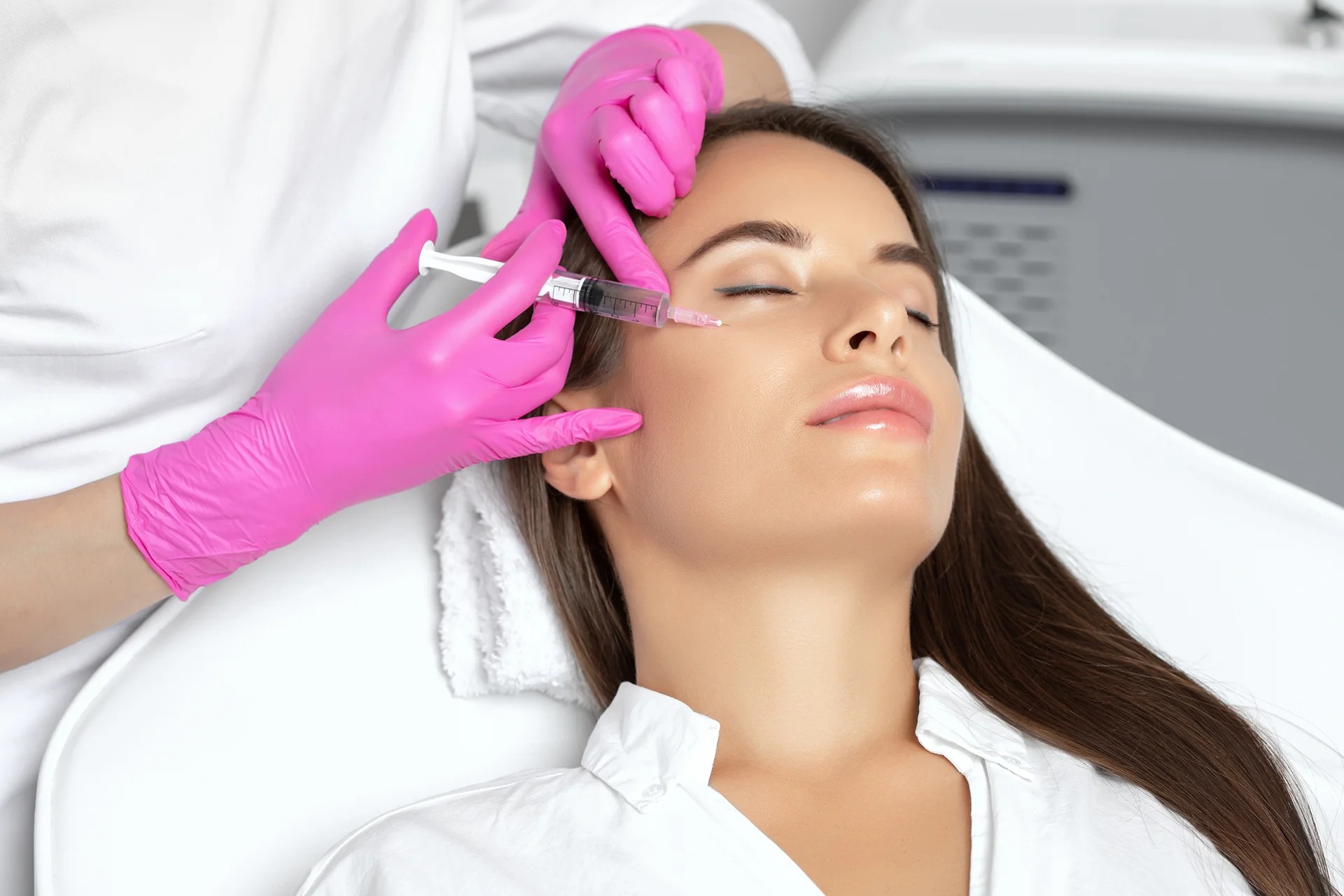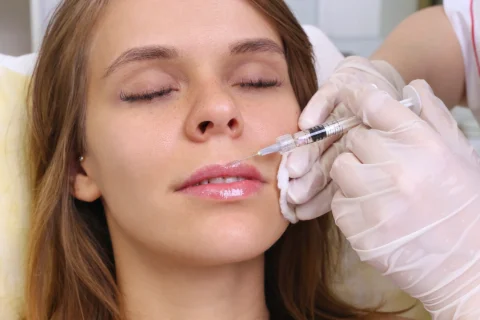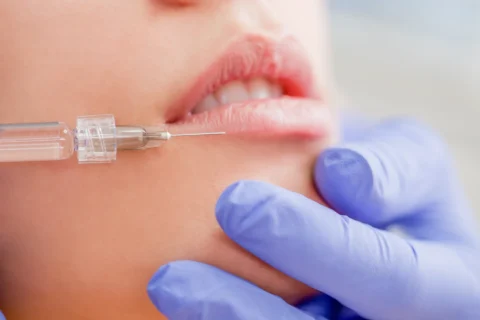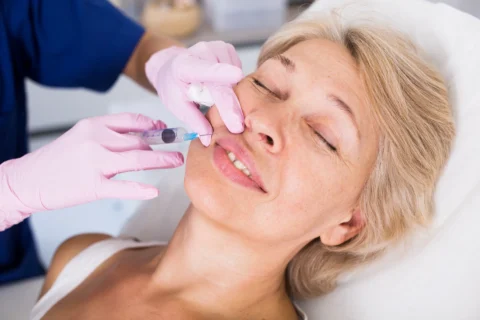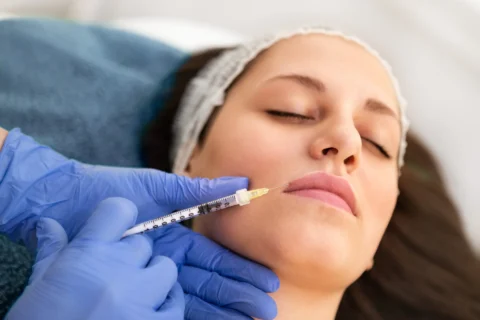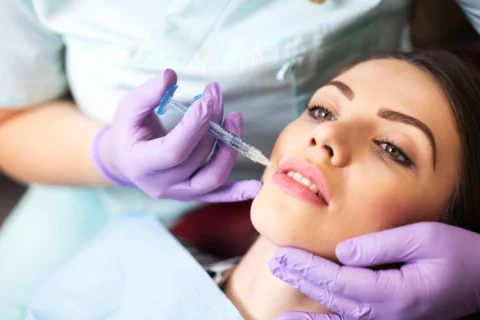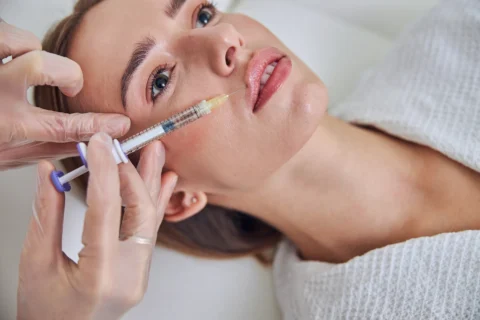Dermal filler treatment is a popular solution for reducing the appearance of facial lines and enhancing facial features without cosmetic surgery. Many patients rely on this cosmetic procedure because it involves minimal downtime, short treatment procedure, and low risks compared to plastic surgery. But many of them still wonder if facial fillers can cause long-term effects.
So what are the long-term side effects of dermal fillers? The long-term side effects of facial fillers include delayed-onset inflammation from hypersensitivity reactions, granuloma due to infections, and delayed-onset erythema. But these adverse reactions happen rarely, usually under the hands of inexperienced injectors. They are also treatable with oral antibiotics, steroids, and hyaluronidase injections.
Long-Term Side-Effects of Dermal Fillers
Facial filler injection is a cosmetic procedure offering fewer risks compared to plastic surgery. But like all aesthetic treatments, it also has chances of developing long-term adverse reactions. Some long-term effects of dermal fillers reported are delayed-onset inflammation and erythema from hypersensitivity reactions and granuloma from infections.
Unlike immediate-to-short-term reactions occurring within 1 to 2 weeks of post-treatment, these adverse reactions take several weeks to months after onset to resolve, whether on their own or with medications.
1) Delayed-Onset Inflammation from Hypersensitivity Reactions
Inflammation has been one of the common side effects of injectable fillers right after treatment – this is the body’s normal reaction to the solution and usually resolves after 3 days. But with delayed-onset hypersensitivity reactions, the swelling appears at least a few weeks after dermal filler injection, presenting itself with:
- Edema
- Induration
- Discoloration at the dermal filler injection sites
- Painful nodules
- Sterile abscesses or pus that isn’t caused by an infection
Unlike an allergic reaction to facial fillers, type IV hypersensitivity reactions are cell-mediated reactions of the immune system to the procedure. The body fails to absorb the dermal filler solution, resulting in mononuclear cells infiltrating the reaction site. They start forming granulation tissue and/or collagen capsule in an attempt to heal the area but only causes inflammation and tissue damage.
Delayed inflammation from hypersensitivity reactions is a long-term effect of dermal fillers, as they may take more than 2 weeks to resolve. A study has reported a case involving complications from hyaluronic acid filler injections, marked by swelling and hard lumps. The patient has reported improvement after 5 days and a full resolution after 3 weeks with hyaluronidase injections and oral steroids.
2) Granuloma from Infection
Aside from type IV hypersensitivity reactions, patients can also develop granulomatous growths from an infection. Granuloma from infections usually presents itself with: lumps or nodules, redness, swelling, pus, and tenderness.
Patients can develop granulomatous inflammations due to getting infected by a virus, bacteria, fungi, or a combination of microbes, called polymicrobial infection. These happen when you get injected with a dermal filler contaminated with bacteria, which tends to develop into a biofilm.
A study has reported a case involving two patients who developed this long-term side effect – they received injections of non-FDA approved soft tissue fillers or hyaluronic acid derivative called Hyacell from the same unlicensed practitioner. Another patient was reported in a study to experience the growth of an infected nodule which persisted for 2 months and resolved with medications for 3 weeks.
3) Delayed-Onset Erythema
Skin redness is one of the most common adverse reactions of facial filler injections due to the acute inflammation in the treated area. But this side effect shows up shortly after your procedure and may only last 2 to 3 days, unlike delayed-onset skin redness. Erythema or skin redness can also be a symptom of a dermal filler complication due to a hypersensitivity reaction, so they can happen alongside swelling, itchiness, and growth of nodules.
Like most dermal filler complications, delayed-onset erythema is rare and treatable. A study has observed 138 patients who received bovine collagen and hyaluronic acid injections. Delayed-onset erythema was reported as one of the long-term effects, affecting 8% of the patients. This adverse reaction resolved on its own within 2 to 3 months.
Treatment for Long-Term Side Effects of Dermal Filler
Complications or long-term side effects of facial filler injections are rare, especially its serious cases. These reactions can resolve on their own, but most still need medical intervention, like taking:
1) Oral Antibiotics
Oral antibiotics are often prescribed to patients experiencing delayed-onset reactions due to infections. Patients responding positively to this medication are often advised to continue the treatment for 2 weeks. Some also take the medications for 4 weeks due to the severity of the infection. The antibiotics used for treating infection from facial filler injections are:
- Clarithromycin
- Doxycycline
- Ciprofloxacin
2) Steroids
Patients take oral or injectable steroids to treat delayed-onset hypersensitivity reactions like the growth of nodules, granuloma, edema, induration, swelling, or erythema. Steroids reduce the activity of the immune system to resolve inflammation. If your long-term reaction is also caused by an infection, you may also need to take antibiotics.
3) Hyaluronidase
Healthcare providers also administer hyaluronidase to patients with hyaluronic acid filler complications. They often inject this daily or every two days during steroid or antibiotic therapy to resolve inflamed lumps. After injected, this solution is massaged on the injected area to get into contact with dissolve the dermal filler.
Safety of Dermal Fillers
Dermal filler injections are still guaranteed to be safe, as long-term side effects are extremely rare. The incidence of cell-mediated hypersensitivity reactions from hyaluronic acid is between 0.3 and 4.25%, and foreign-body granuloma only 0.01 to 1%. Long-term side effects from dermal fillers usually happen under the hands of inexperienced injectors. So patients should ensure having this treatment from trusted practitioners.
Why Patients Experience Long-Term Side Effects from Dermal Fillers
Complications or long-term side effects from dermal filler injections are rare and usually occur under the hands of unlicensed and inexperienced practitioners. Some patients are also hypersensitive to dermal fillers.
1) Having Hypersensitivity Reactions to the Solution
Some complications from facial filler injections are caused by a patient’s hypersensitivity reaction to the material, where T cells prompt inflammatory reactions against endogenous and exogenous antigens. Patients tend to be hypersensitive to dermal filler injections due to the DNA fragments in the filler material, endotoxins, or impurities of the proteins.
2) Receiving Treatment from Unlicensed Injectors
Aestheticians with a license for conducting dermal filler injections undergo extensive training. They learn facial anatomy, injection techniques, and other standards for a safe and successful facial filler treatment. Receiving treatment from unlicensed injections poses risks of unwanted reactions, as they operate without adherence to regulations and standard operating procedures imposed by the law.
Patients can’t guarantee the skill and expertise of an unlicensed injector. Seeking dermal filler injections from these practitioners come with risks of complications. This is especially when these reactions may also be caused by inaccurate injection techniques and filler volume.
3) Getting Injected in Unsanitary Conditions
Receiving dermal filler injections in unsanitary conditions also risks infections due to contamination of the facial filler material and medical supplies. More than this, practitioners must also follow proper protocols on sanitation during the treatment process to avoid bacteria and other opportunistic contaminants from infecting the treated area.
4) Using Black Market Dermal Fillers
Dermal filler products from the black market aren’t properly manufactured by legal pharmaceutical companies and tend to contain contaminated and toxic substances like hair gel. Many cases of serious complications of dermal filler treatments are caused by these products.
The FDA has even issued warnings on using dermal fillers sold directly to the public. Long-term side effects from these products involve infections, allergic reactions, necrosis, swelling, and even blindness due to embolism.
How to Choose the Best Practitioner for Your Dermal Filler Treatment
Injectable filler treatments are safe and effective with a trusted practitioner. These expert injectors adhere to the regulations imposed by the law on performing dermal filler procedures. They’re also notable for reliable tools and techniques for delivering every patient’s aesthetic goals. To choose the best practitioner for your facial filler treatment, you should:
- Check expertise and training – choose a dermal filler injector notable for providing stellar results most safely and comfortably possible. To seek these practitioners, you may check their training and experience in the industry, like:
- Facial plastic surgeons
- Board-certified plastic surgeons
- Cosmetic dermatologists
- Licensed cosmetic injectors with training from reputable certification classes
- They are equipped with the knowledge, training, and experience in conducting dermal filler injections.
- Avoid choosing based on pricing – low-cost options tend to offer a minimal guarantee of safety and successful results. Prioritize safety and skill with reliable practitioners that also have intensive consultation and aftercare services.
- Choose professionals offering different treatments – seek practitioners offering a wide range of aesthetic treatments to receive a customized plan for achieving your aesthetic goals. Some patients seeking dermal filler treatments might have more suitable treatment procedures based on their needs, like Botox, laser treatments, and other solutions.
- Opt for trusted practitioners – transparency is a vital aspect in considering the right dermal filler injector to trust. You might want to make sure that they discuss everything you need to know about the treatment, like the brand of the substance, risks, and even their experience level. Ensure being cautious about practitioners pressuring you to take complementary procedures without justification.
- Check before and after pictures – check a practitioner’s before and after photos to assess their expertise and experience.
Get Dermal Filler Treatment from Highly-Trained Professionals at Ethos Spa
Dermal filler treatment is a popular anti-aging and facial augmentation solution due to its convenience and natural-looking yet noticeable effects. While generally a safe and low-risk procedure compared to plastic surgery, there are still chances of developing long-term side effects. But these reactions usually happen under the hands of inexperienced injectors. That’s why patients must ensure seeking treatment from a highly-trained and certified practitioner.
Ethos Spa is one of the most trusted medical spas in New Jersey for a wide range of aesthetic treatments. They also perform dermal filler injections for patients seeking solutions to resolve wrinkles and enhance their facial features. You can expect the best estheticians to perform your treatment with intensive consultation and aftercare. Get started with your dermal filler treatment today and book an appointment with us.

